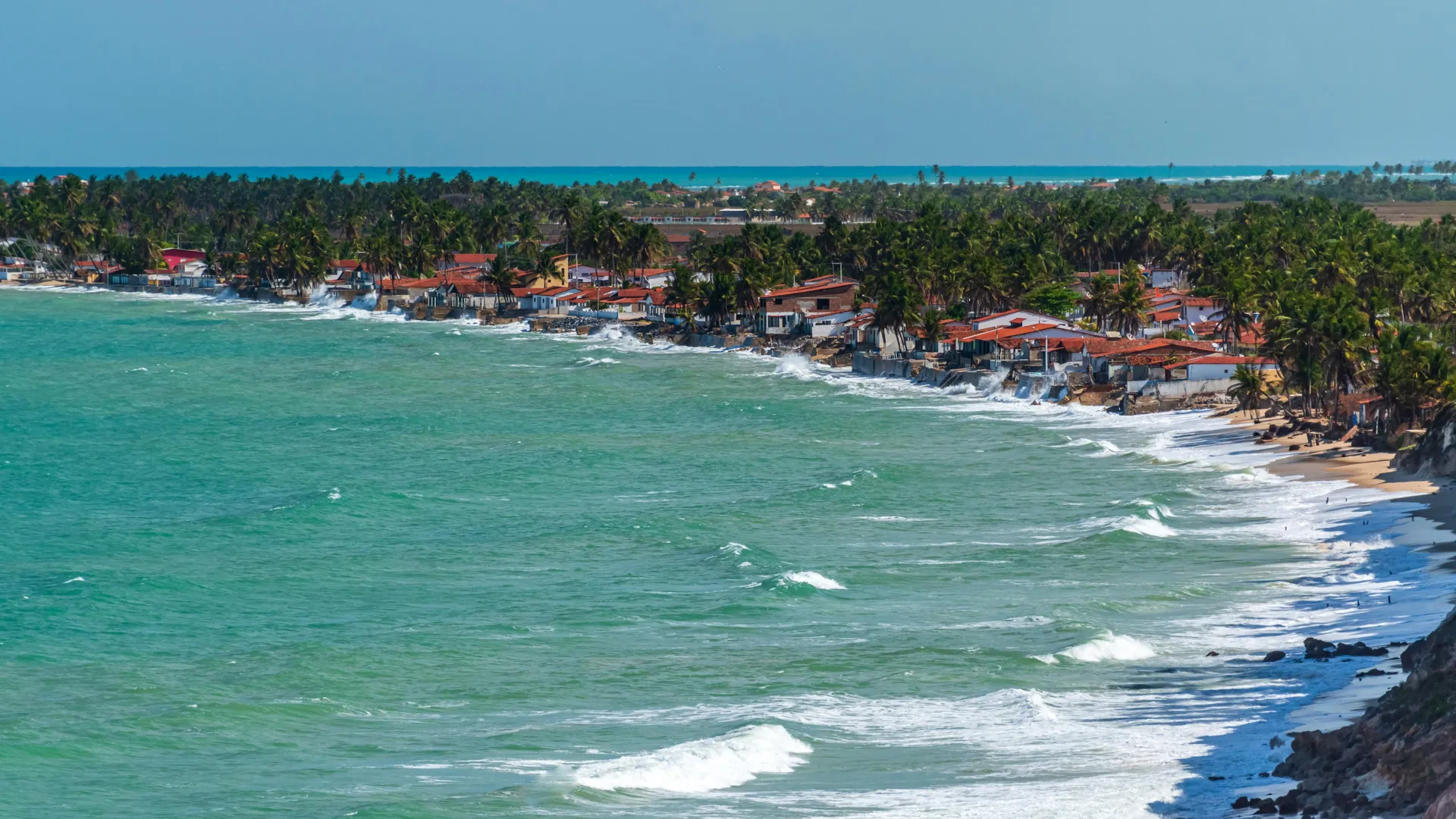Scientists warn half the world’s beaches could disappear
Rising seas and human pressures are rapidly shrinking the world’s beaches and destabilizing the ecosystems that depend on them.
- Date:
- November 27, 2025
- Source:
- Fundação de Amparo à Pesquisa do Estado de São Paulo
- Summary:
- Human development and climate-driven sea level rise are accelerating global beach erosion and undermining the natural processes that sustain coastal ecosystems. Studies reveal that urban activity on the sand harms biodiversity in every connected zone, magnifying worldwide erosion risks.
- Share:

Coastlines around the planet are being steadily "crushed" as climate-driven sea level rise combines with expanding development in coastal zones. This ongoing process damages the diverse life that depends on sandy environments, disrupts local economies that rely on fishing and tourism, and leaves coastal cities more exposed to encroaching waters.
The concern was raised by Uruguayan marine scientist Omar Defeo, a professor at Uruguay's University of the Republic (UdelaR), during the opening sessions of the FAPESP Day Uruguay symposium, which began on November 13 in Montevideo.
"Almost half of the beaches will disappear by the end of the century. We in Uruguay, Brazil, and Argentina share these resources. Therefore, we must work in partnership with Brazilian scientists to manage and conserve coastal ecosystems," Defeo said.
How Coastal Zones Work Together to Protect Shorelines
Defeo explained that the coastal system is made up of three interconnected regions. The dune (post-beach) sits above the high tide mark, where wind-driven sand builds mounds or "sand mountains." Below it lies the beach (beach face), which is exposed during low tide and covered at high tide. Farther seaward is the submerged part (foreshore), stretching from the low tide limit to the point where waves begin to break.
"These zones form an interconnected coastal ecosystem that's essential for environmental balance. How are they interconnected? The wind carries sand from the dry area to the surf zone [the submerged part]. And when the waves advance, they bring the sediment back to the beach. This bidirectional movement generates a constant exchange in which one zone feeds the other. When a storm comes, the dune acts as a buffer. So when urbanization eliminates the dune, the result can be the destruction of seaside homes," he noted.
Urbanization Disrupts Entire Coastal Ecosystems
Research conducted by Defeo's team in collaboration with Brazilian scientists supported by FAPESP found that disturbing any one of these three zones affects the entire ecosystem. The project, led by Brazilian researcher Guilerme Corte, examined biodiversity at 90 sites on 30 beaches along the northern coastline of São Paulo, Brazil.
Their findings, published in Marine Pollution Bulletin, show that increased numbers of beachgoers have the strongest negative impact on species richness and biomass, especially in submerged zones. Buildings constructed directly on the sand and mechanical beach cleaning also reduce species richness and biomass. In contrast, abundance (number of individuals) was higher in areas near urban centers, a pattern the authors attribute to opportunistic species such as polychaetes that thrive on organic matter linked to human presence.
"Above all, the study showed that human impacts aren't restricted to the place where they occur [on dry sand]. Stressors such as construction and high numbers of visitors on the upper part of the beach negatively affect biodiversity in the lower and submerged areas," Defeo said.
Global Survey Shows Widespread and Severe Beach Erosion
Another study led by Defeo with Brazilian collaborators, published in Frontiers in Marine Science, evaluated 315 beaches worldwide and found that one-fifth exhibit intense, extreme, or severe erosion. The researchers assessed contributing factors such as sea level rise, changes in wind patterns, and wave behavior. "We observed that human activities play a significant role, particularly on reflective beaches [with a steep slope that causes waves to dissipate their energy abruptly on the beach] and intermediate beaches [which have characteristics of both reflective beaches and calm or dissipative beaches]," he explained.
Symposium Highlights Regional and International Collaboration
Defeo presented these findings during the symposium's first scientific session, dedicated to oceanographic sciences. The panel was moderated by Marcelo Dottori of the University of São Paulo (USP) and featured additional contributions from Cristiana Seixas of the State University of Campinas (UNICAMP) and Natália Venturini of UdelaR.
The event's opening ceremony was attended by Alvaro Brunini, president of Uruguay's National Research and Innovation Agency (ANII); Marcio de Castro, scientific director of FAPESP; Raul Machado, manager of the Foundation's Institutional Relations Advisory and coordinator of the symposium; and Brazil's ambassador to Uruguay, Marcos Leal Raposo Lopes.
Story Source:
Materials provided by Fundação de Amparo à Pesquisa do Estado de São Paulo. Original written by Karina Toledo. Note: Content may be edited for style and length.
Journal References:
- Guilherme N. Corte, Helio H. Checon, Yasmina Shah Esmaeili, Omar Defeo, Alexander Turra. Evaluation of the effects of urbanization and environmental features on sandy beach macrobenthos highlights the importance of submerged zones. Marine Pollution Bulletin, 2022; 182: 113962 DOI: 10.1016/j.marpolbul.2022.113962
- Fabio Bozzeda, Leonardo Ortega, Leonardo Lopes Costa, Lucia Fanini, Carlos A. M. Barboza, Anton McLachlan, Omar Defeo. Global patterns in sandy beach erosion: unraveling the roles of anthropogenic, climatic and morphodynamic factors. Frontiers in Marine Science, 2023; 10 DOI: 10.3389/fmars.2023.1270490
Cite This Page: